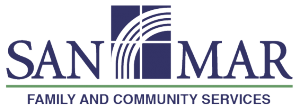Herald Mail story by Tamela Baker available here: San Mar receives Senate recognition
Md. Senate recognizes Bester program as ‘model’ for communities
ANNAPOLIS — In January, the Bester Community of Hope — a cooperative initiative to strengthen families in the neighborhood of Bester Elementary School — won national recognition from Casey Family Programs.
It was recognized for bringing together public, business, nonprofit, philanthropic and community partners to improve the safety and success of children and their families.
On Thursday, the Maryland Senate recognized San Mar Family and Community Services, the organizing agency for the Community of Hope, for “being awarded the national Jim Casey Building Communities of Hope Award for the Bester Community Hope Initiative and making a difference in the lives of Maryland children, families, and communities.”
Sen. Andrew Serafini, R-Washington, called the Bester program a model for other communities.
San Mar CEO Keith Fanjoy, Washington County Social Services Director Mike Piercy and family support worker Teri Conrad were on hand for the citation.
Bester Community of Hope is a San Mar initiative that had its beginning in 2014, as the longtime residential facility sought to provide services to families earlier — before there is any need to place children in foster care.
Partnering with Bester Elementary, Social Services, Meritus Health, Hagerstown police and several other community agencies, San Mar has endeavored to connect families with available services including health care, after-school activities and other school-based programs.
“We’re really excited today to receive this resolution,” Fanjoy told Herald-Mail Media. “It’s a validation of a lot of hard work from a lot of different people. And really, when we come down to Annapolis and Sen. Serafini’s taken the time to really share our story with the community, ultimately that’s going to help us to continue on in the future.”
The initiative has had “critical funding” from Social Services, the Fletcher Foundation and Casey Family Programs, Fanjoy added. “Essentially, it’s a place-based strategy to help children and families be stronger, with the idea that we can reduce the amount of children entering into the foster care system.”
“The results we’re seeing is a greater investment in the families in our community,” Piercy said.
Whenever a child can be safely kept at home and parents are provided resources to help, he added, “we’re not only preventing a child from coming (into foster care) now, but we’re also reducing the trauma that child might experience in separation. So there’s an economic return on investment, but there’s also a social return on investment, which is families — their capacity being deepened and improved.”
Conrad said there’s a referral process in place for bringing families into the program, but “we are there to reach out to the community. … We try to connect with everyone in the family and let them identify what their concerns are, and help them … reach the goals that they have as a family.”
